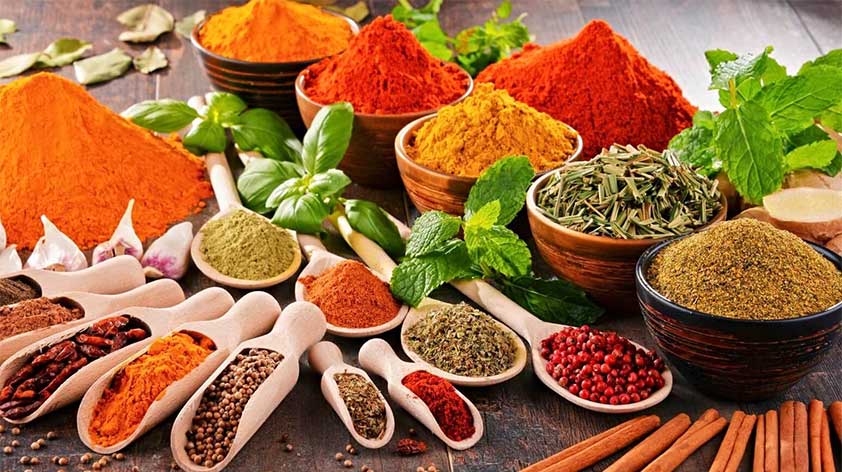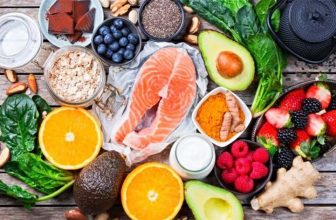
Throughout history, spices have been used for religious ceremonies, cultural gatherings and for seasoning food to add that extra flavour. Growing up in a Caribbean household it was common to see my parents marinate recipes with certain spices the little meat and fish that we did consume (ie. chicken, snapper, Grant, solider fish etc). Spices today are in huge demand. According to the UN Food and Agriculture Organisation in 2011, over a third (75%) of the world’s spice production came out of India alone. Intrigued? So were we, so follow along and explore these Top 6 Spices to Kick Your Health into Overdrive!
First a little history…
Deriving from the Latin word ‘spec’, which literally means ‘’appearance’’ or as a ‘’sort’’ akin to a typology as a noun. Spices have been used since antiquity. As far back as 1550 B.C.E, The Kemetians (Ancient Egyptians), the Chinese and the Indians are said to hold some of the earliest written evidence about spices.
A particular reference can be found in the Ebers Papyrus from the Ancient Egyptians from the era of 1550 B.C.E. In this material, it has been suggested that there are in excess of eight hundred basic medicinal remedies. Early trading of spices was common throughout what is now known as the Southern India peninsula and what was referred to as Mesopotamia at the time. Much of the demand for spices included herbs that the Egyptians used for mummification. Now let’s get into the list…!
1. Turmeric
Deriving from Curcuma longa, a flowering plant that forms part of the ginger family; this spice has many aliases such as Indian saffron and golden spice and it serves up many excellent health properties.
Ground turmeric is said to be the fundamental ingredient in curry powder and the extract can be found in laxative teas and popular health supplements that aid the body’s joints.
The dominant ingredient found in turmeric is curcumin, which has potent biotic effects on reducing bodily distress, pain and inflammation, as well as greatly improving digestion.
Supplementing turmeric in your diet is a good idea, but merely the occasional meal with generous amounts of turmeric is not going to bring any dramatic changes. However, when turmeric is combined with black pepper (which contains a property known as piperine) the bioavailability of turmeric in the human body is tremendously increased.
2. Chili
Spicy foods tend to be a great contributor to weight loss and chili doesn’t discriminate here. This is due to a key compound called capsaicin found in the spice which stimulates the body’s metabolism, thus encouraging weight loss.
Capsaicin is also good for heightened sensitivity-releasing endorphins, which contribute to making us feel good. Derived from pepper, one receives a myriad of benefits from this spice.
Fascinatingly, peppers actually contain more vitamin C than an orange (up to seven times more) and are according to studies such as ‘Capsaicin and Gastric Ulcers’ (published in Food Science Nutrition in 2006), a great stomach antidote that can irradiate bacteria that creates stomach ulcers. Additionally, chilli can also help prevent acid reflux.
3. Fenugreek
Fenugreek is both a spice and an herb because of its leaves, the plant is part of the fabaceae family, or more typically known as the legume family. It is a staple ingredient in many Indian cruises and hot curries in countries such as Sir Lanka.
According to a 2016 study ‘Toxicological properties of fenugreek’ it can cause diarrhoea and flatulence. However there doesn’t seem to be enough scientific research on this spice, but moderate amounts are not known to cause any harm.Consumed sensibly, the benefits dwarf the negative factors.
In the same study, it was revealed that in both several human and animal models, fenugreek can impressively foster antidiabetic and anti-carcinogenic benefits as well as reduce inflammatory complications and combat hyperlipidaemia (higher than normal levels of fat, cholesterol, or triglyceride) issues.
4. Ginger
Where would I be without my beloved ginger? Although I tend to use the bark of ginger, one can grate the spice and then proceed to ground it. Ginger is my go to when I have stomach aches, which usually occurs when I have been over-preoccupied with work, or studying, or perhaps have done too many sit-ups and not consumed enough fluids, or may have consumed food to quickly without fluids (preferably at least 30 minutes before eating).
I find boiling ginger an effective remedy, but interestingly, even grounded ginger in oatmeal porridge can be effective. Similar to turmeric, this root has some wonderful anti-inflammatory properties which reduce inflammation-causing C-reactive proteins.
Ginger also has high quantities of minerals such as copper, manganese, niacin, phosphorous and iron, and is most effective raw – which I have never tried. Both ginger bark and the spice are highly versatile and can be added to almost anything.
5. Cumin
Is there a single spice that does not do wonders for the body’s digestive system? Cumin contains thymol which fosters the production of stomach acid and bile. It is excellent for the enzymes of the digestive tract.
Cumin can consumed in seed form (reminds me of sunflower seeds, just only not grey in appearance and darkish brown and from my experience usually bigger in size), or as a spice.
It possesses vitamin E, which is a great antioxidant and improves skin conditions. Cumin is also an excellent antibacterial spice, which serves well in fighting infection and respiratory complications.
6. Cinnamon
I absolutely adore cinnamon. It is so versatile! The Ancient Egyptians valued its antibacterial benefits using it to embalm their mummies.
You can make vegan ice-cream with cinnamon, apple cinnamon roll cake, and for savoury foods such as cinnamon raisin bread. The spice can be sprinkled on your favourite cereal, or added to your most enjoyable smoothie to add a sweet, indulgent, quality taste to even the dullest foods. Like with all spices, just be careful not to use excessive amounts.
Cinnamon is said to be one of the most dense spices, with just the equivalent of a teaspoon per day being sufficient. A report published looking at the ‘Effects of Cinnamon supplementation on antioxidant status and serum liquids in women with polycystic ovary syndrome’ (PCOS), demonstrated that cinnamon improved the serum lipid of women with PCOS and raised their overall antioxidant levels.









